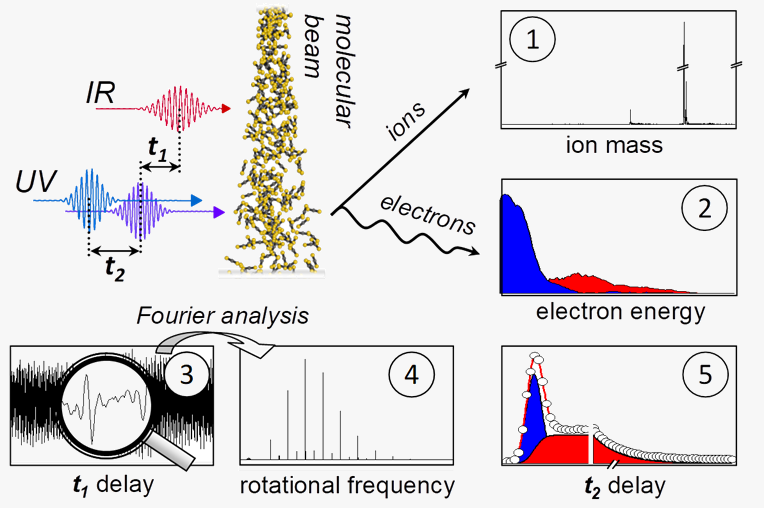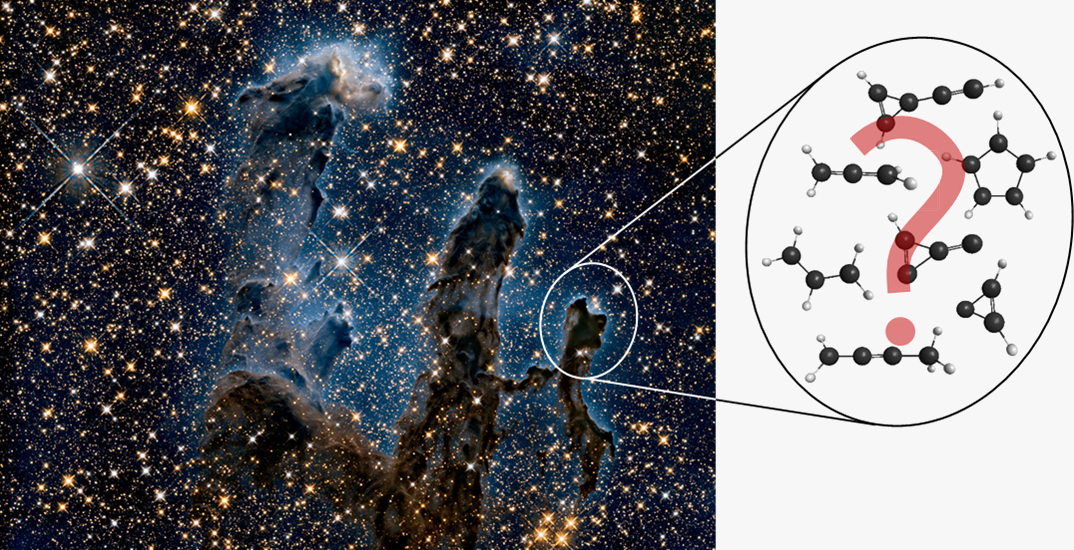수리과학, 물리학, 화학, 생명과학 분야와 이들을 기반으로 한 융&복합 분야
미래 산업 경쟁력 강화의 근간이 되는 소재 및 ICT 분야
과제 & 연구자
과제 & 연구자
큰 꿈을 향한 무한탐구의 연구열정,
삼성미래기술육성사업이 응원하며 함께 하겠습니다.

다차원 레이저 분광학을 활용한 불균일 분자 시료의 구조-특성 연구
Multidimensional Laser Spectroscopy to Study Structure-Function Relationships in Heterogeneous Molecular Samples
Most molecular samples are heterogeneous in terms of atomic and isotopic composition, or in terms of isomeric structure. The spectroscopic characterization of heterogeneous samples is difficult because signals originating from different sample components are not easily separated. We overcome this limitation by correlating multiple spectroscopic observations. As illustrated in the Experimental Scheme, a laser pulse creates a coherent quantum state superposition of rotational states, which is subsequently interrogated by photoionization and detection of electrons and ions. Resulting correlated and multi-dimensional spectroscopic data facilitate the simultaneous assignment of molecular composition (observation of ion mass), nuclear structure (observation of rotational properties), and electronic structure and reactivity (observation of electronic spectra) for each component in the sample. This allows the characterization of compounds that cannot be isolated (e.g., tautomers, or reactive species) or where purification is forbiddingly expensive (e.g., isotopologues).

Experimental Scheme, and types of correlated data: An IR laser pulse creates a rotational wave packet, which is probed as function of delay t1 by UV photoionization with detection of mass (1) and electron spectra (2). t1-dependent signal modulations (3) are Fourier-analyzed to correlate signals to rotational spectra (4). Additional t2-dependent pump-probe spectra (5) reveal excited state pump-probe dynamics.
We will use this novel spectroscopic tool to address long-standing scientific questions involving impure molecular samples. For example, we will characterize molecular beams of highly reactive hydrocarbon species to address a chemical aspect of the question “what is the Universe made of”. Telescope data for interstellar matter, such as depicted “Pillars of Creation” interstellar clouds, reveal a wealth of molecular spectroscopic lines. To-date, some 200 interstellar molecules have been identified, but this accounts only for a small fraction of the observed spectroscopic data. We postulate, that many interstellar molecules are highly reactive and therefore cannot be isolated for spectroscopic analysis on earth. With the correlation of molecular mass and high-resolution rotational spectra, we aim to identify and characterize hydrocarbon species that were inaccessible to traditional spectroscopic analysis, creating reference data for the interpretation of astrophysical spectra.

Interstellar clouds, such as the “Pillars of Creation” (Hubble photo, NASA), are rich in molecular species. Through reference spectra, we aim to establish the abundance of reactive hydrocarbon species in astrophysical environments.
Multidimensional Laser Spectroscopy to Study Structure-Function Relationships in Heterogeneous Molecular Samples Most molecular samples are heterogeneous in terms of atomic and isotopic composition, or in terms of isomeric structure. The spectroscopic characterization of heterogeneous samples is difficult because signals originating from different sample components are not easily separated. We overcome this limitation by correlating

